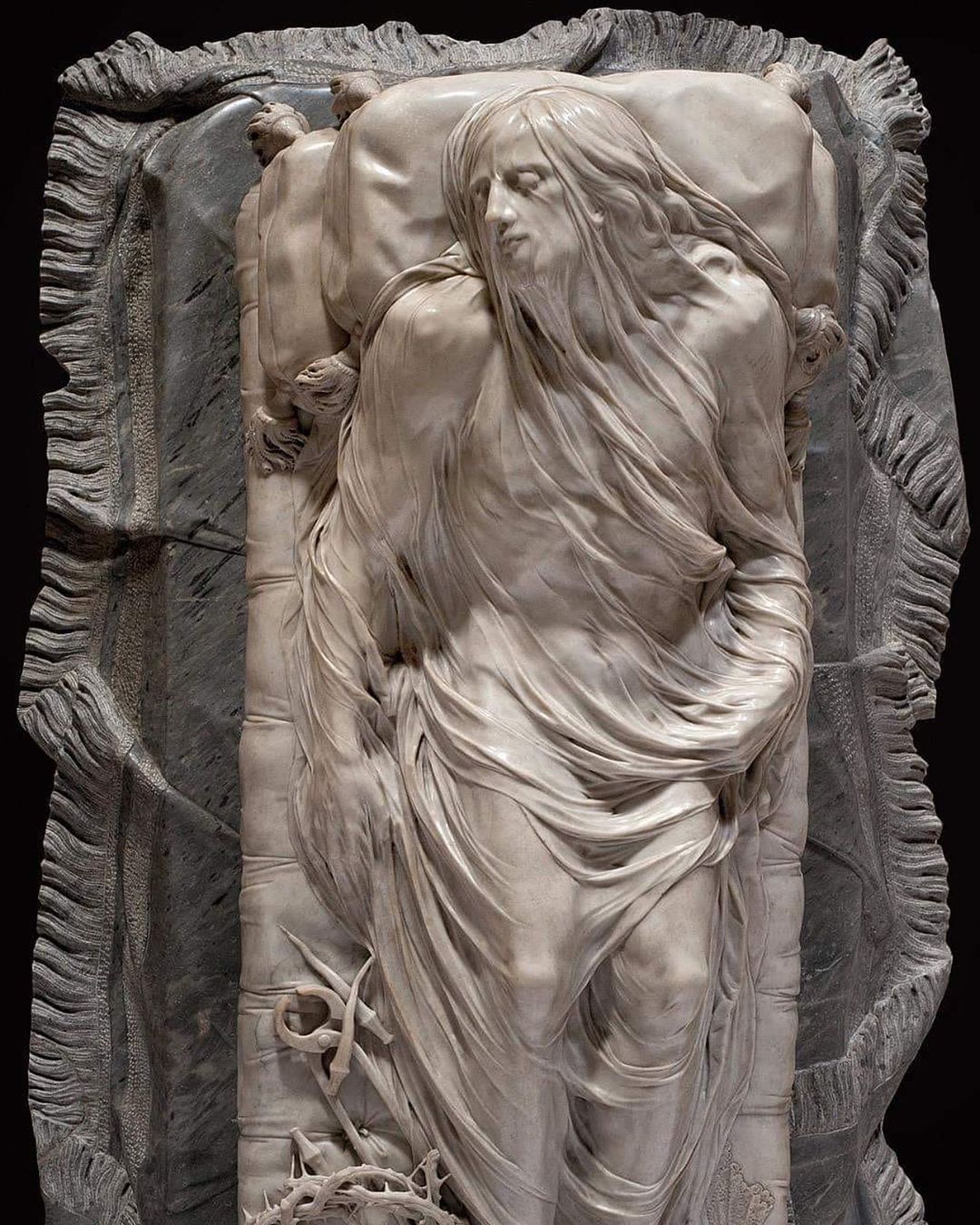Author of the Veiled Christ, Giuseppe Sanmartino was born in Naples in 1720. He was a student of Matteo Bottiglieri, and since the beginning, he dedicated himself to sculpture. The first new identify him as the author of two statues in the cathedral of Monpoli of 1747.
The first half of the c entury marked his return to Naples, in a phase of splendour of the city, where the Cappella Sansevero was being constructed and, several artists from a variety of places worked under the direction of Raimondo diSangro. Among them, the Venetian Antonio Corradini, who involved him in the work. Sanmartino probably collaborated with Corradini on the statues of Pudicizia and Decoro. Corradini should have sculpted a “Veiled Christ”, but he died prematurely in 1753 and the prince decided to entrust the work to Sanmartino, in his thirties, of who he really appreciated the talent. The Neapolitan sculptor created the most significant work, complex and particular among all the others beautiful adorning the Chapel, among the most famous and visited art placed of the city of Parthenope.
entury marked his return to Naples, in a phase of splendour of the city, where the Cappella Sansevero was being constructed and, several artists from a variety of places worked under the direction of Raimondo diSangro. Among them, the Venetian Antonio Corradini, who involved him in the work. Sanmartino probably collaborated with Corradini on the statues of Pudicizia and Decoro. Corradini should have sculpted a “Veiled Christ”, but he died prematurely in 1753 and the prince decided to entrust the work to Sanmartino, in his thirties, of who he really appreciated the talent. The Neapolitan sculptor created the most significant work, complex and particular among all the others beautiful adorning the Chapel, among the most famous and visited art placed of the city of Parthenope.
The Veiled Chris gave a decisive impulse to Sanmartino artistic career. In 1757 he sculpted four statues in the Charterhouse of Saint Martin: The Virginity and the Prize for the Chapel of the Assumption and the Fortitude and the Charity for the Chapel of San Martin. During those years, however, he reconsidered his relationship with the court artist Luigi Vanvitelli, who preferred non-Neapolitan artists, even if he appreciated him as an artist. In 1783, fourteen of his twenty is statues on the virtues of Charles III were commissioned for the Foro Carolino and Sanmartino completed all of them in eighteen months. The behaviour of his son and Louis’ heir, Carlo Vanvitelli, was different. He gave space to Sanmartino, who did several works in the queen’s apartments in the Royal Palace and he restored the Giant of the palace in 1787. He also worked in the Church of Girolamini and he is the author of Tobias and the Angel in the Chapel of the Treasure of San Gennaro. Sanmartino was particularly appreciated by the rich Apulian clients. He painted works in cathedrals and churches of the main regions’ centre. With the students of his workshop, the artist was active even with the crib art, which knew a considerable impulse in Naples in XVIII century. Giuseppe Sanmartino died in Naples on 12th of December 1793.




Comments powered by CComment